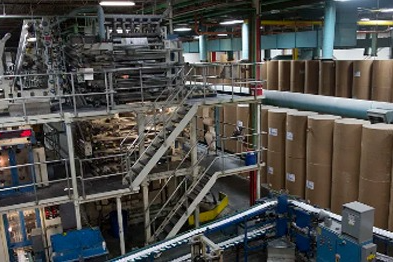The printing industry has been a significant contributor to environmental degradation due to its high paper consumption and ink waste. According to the Environmental Protection Agency (EPA), paper and paperboard products make up the largest percentage of municipal solid waste in the United States. The industry has recognized the need for sustainable practices and eco-friendly alternatives to mitigate its environmental impact.
Paper Consumption
The printing industry is one of the largest consumers of paper, with an estimated 2-3% of the world's wood supply being used for paper production. The production process requires significant amounts of water, energy, and chemicals, contributing to deforestation, water pollution, and greenhouse gas emissions. However, the industry has taken steps to reduce its paper consumption through digitalization and recycling.
Digitalization has reduced the need for paper, as digital files can be shared and accessed with ease. Printing companies have also adopted paperless billing and invoicing systems, reducing their paper use. Recycling has become a standard practice in the industry, with recycled paper accounting for over 40% of the total paper usage in the United States. Recycled paper reduces the need for virgin pulp and reduces waste in landfills.
Ink Waste
The printing process produces ink waste, which can be harmful to the environment. Ink contains toxic chemicals that can pollute waterways and harm wildlife. The industry has addressed this issue through the adoption of eco-friendly inks and improved management practices.
Eco-friendly inks are made from natural, renewable resources like vegetables and soybeans, instead of petroleum-based chemicals. These inks are biodegradable, reducing the risk of environmental harm. Printing companies have also improved their management practices by implementing ink recycling programs. These programs collect and recycle unused ink, reducing waste and saving money.
Sustainable Practices
The printing industry has adopted sustainable practices to reduce its environmental footprint. Some of these practices include:
Energy-efficient equipment: Printing companies have replaced old, inefficient equipment with energy-efficient models. This reduces energy consumption and lowers greenhouse gas emissions.
FSC-certified paper: The Forest Stewardship Council (FSC) certification ensures that paper products are sourced from responsibly managed forests. Printing companies that use FSC-certified paper demonstrate their commitment to sustainable practices.
Waste reduction: Printing companies have implemented waste reduction programs, such as using digital proofs instead of physical ones and reducing excess paper on print runs.
Carbon offsetting: Some printing companies have adopted carbon offsetting programs, which offset their environmental impact by investing in renewable energy or reforestation projects.
Conclusion
The printing industry has recognized its environmental impact and has taken steps to mitigate it. Through the adoption of sustainable practices and eco-friendly alternatives, the industry has reduced its paper consumption and ink waste. Sustainable practices like energy-efficient equipment, FSC-certified paper, waste reduction, and carbon offsetting demonstrate the industry's commitment to reducing its environmental footprint. As consumers, we can support these efforts by choosing printing companies that prioritize sustainability and eco-friendliness.

 EN
EN
 AR
AR
 CS
CS
 DA
DA
 NL
NL
 FI
FI
 FR
FR
 DE
DE
 EL
EL
 HI
HI
 IT
IT
 JA
JA
 KO
KO
 PL
PL
 PT
PT
 RO
RO
 RU
RU
 ES
ES
 SV
SV
 IW
IW
 ID
ID
 VI
VI
 SQ
SQ
 HU
HU
 MT
MT
 TH
TH
 TR
TR
 AF
AF
 GA
GA
 BN
BN
 BS
BS
 LO
LO
 LA
LA
 MI
MI
 MN
MN
 NE
NE
 MY
MY
 KK
KK
 UZ
UZ
 KY
KY
